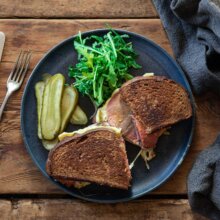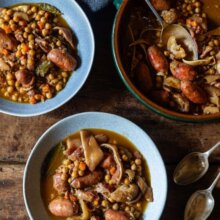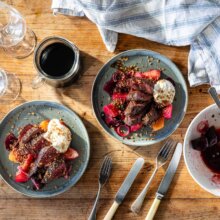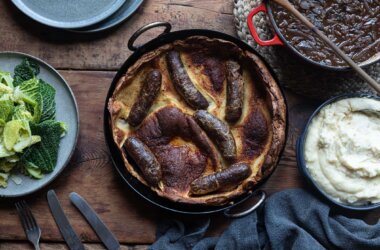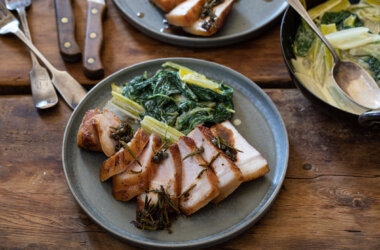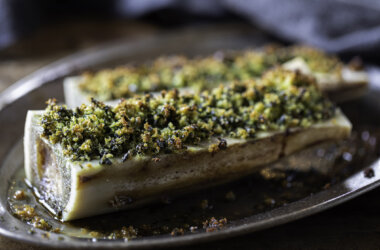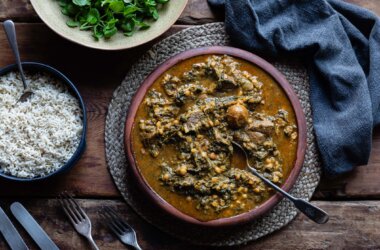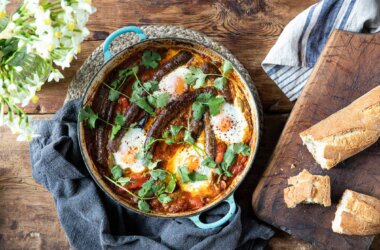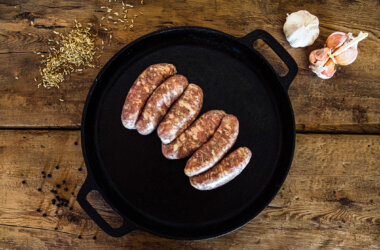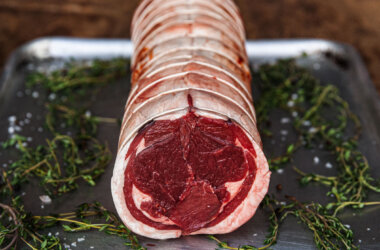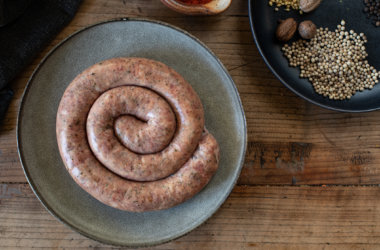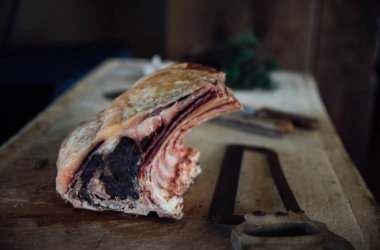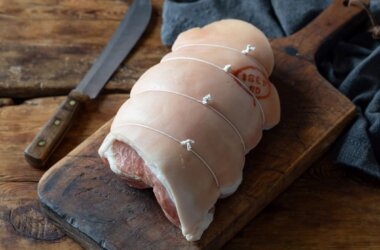Christmas without ham is Christmas without The Two Ronnies, Kermit without Miss Piggy, it just isn’t Christmas!
Oh, the happy memories of sneaking into the larder to saw away at the sugary glaze only to then witness an exasperated and furious mother giving chase. Marmite is not the best disguise for patching up such thievery! A ham out of reach on the highest shelf, however, would still see the use of a step ladder.
Next to the goose all confused in bread sauce, Cumberland sauce and gravy or as a continuous lure for phantom hunger and the ham is a yuletide and well-visited foundation stone… even a vegan one, I guess.
I like my ham cold for Christmas lunch and so by getting it ready one or even two days before can take a lot of stress out of Christmas.

Ingredients
Method
- Take a large pan, big enough to accommodate the ham.
- Lower the ham in, making sure it is covered with at least 2 inches of water.
- Add in the parsley, celery, peppercorns and bay leaves.
- Bring to a slow simmer and put the lid on but remembering the heat will need to be checked as it will rise with the lid. A wobble is ideal as the ham should cook slowly.
- Using a probe and when the ham reads 66°C at its core, take it out of the stock and allow it to cool. The thermometer is the most reliable guide, however, expect this to take between three and four hours.
- Remove any string from the ham and cut the rind away whilst still warm (easier) but leaving as much fat attached as you can.
- Using a knife and cutting into the fat (but never the flesh) cut a criss-cross through the fat with a large diamond pattern. No need to go too deep.
- On a chopping board sprinkle the mustard powder so that it is covered well.
- Preheat the oven to 200°C
- Roll only the fat of the ham in the mustard powder. Do this thoroughly. The mustard should look powdery and dry. Make sure to cover ALL the fat. Do NOT be tempted to rub it in deeply as the point is that it mop up the glaze and prevent it sliding off. I repeat…the skin should be well-powdered and yellowed.
- Poke a single clove into the centre of each diamond of fat.
- In a small pan melt the orange juice, honey and sugars together.
- Lay the ham, fat side up, on top of the oranges on a rack placed within an oven tray or a dutch oven.
- With a glazing or pastry brush drizzle and disperse some of the glaze over the ham and place in the oven.
- Check after about 5 minutes, then heavily drizzle, brush and daub with more marinade, so that all fat starts to be covered, building up with layers of the dark glaze.
- Keep on repeating every 5-8 minutes. Just don’t let the sugars burn.
- Soon enough the layer will be beginning to build but the sugar in the pan will be darkening.
- Tilting the tray to get at the melted sugars, start spooning this over the ham fat too. When the initial glaze supply is finished up then continue with what drips back into the tray. Take care that you revisit the glazing enough that it doesn’t burn whilst you add on more layers.
- In the end after 4-5 visits and the ham glazing will be done.
- Let it stand whilst the glaze cools and sets.
- There will be sugar waste but this can be bought to a simmer with water and cleaned from the tray.
